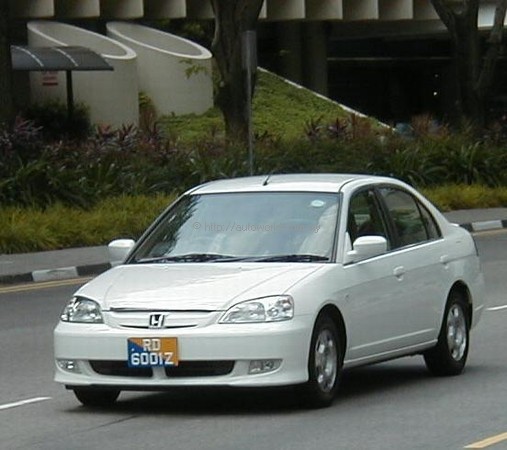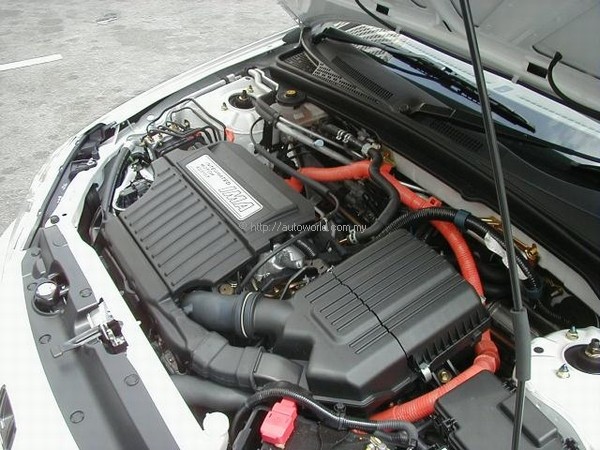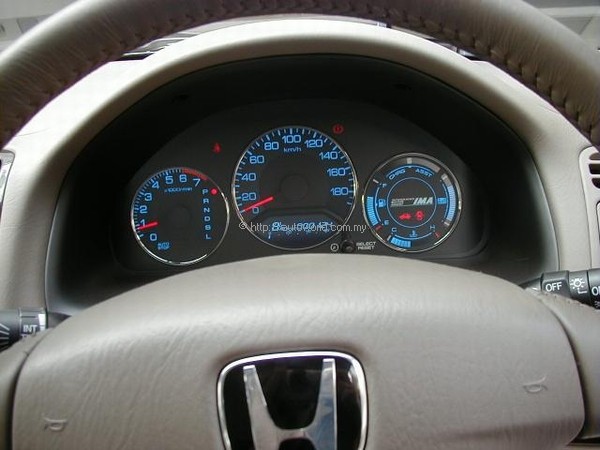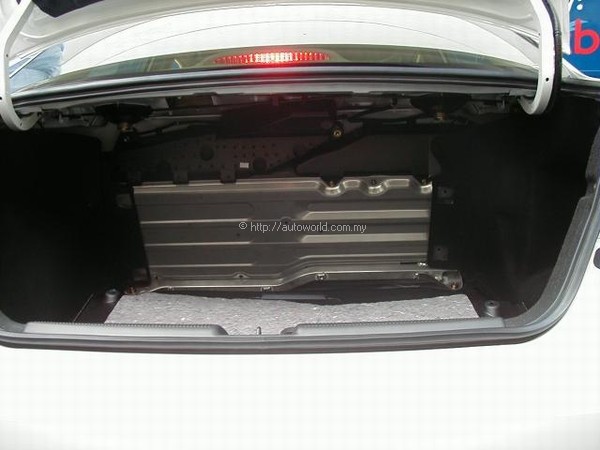Brief driving impressions
At a glance, the white Honda Civic looked no different from the many other Civics on the road. However, a longer look showed that the front end had a different bumper profile and a different grille; at the rear, a spoiler was attached to the bootlid.
The badge below the lefthand tail light gave away the uniqueness of these Civics: under the bonnet was the new Honda IMA hybrid system which has enabled the Civic Hybrid, launched in Japan in December 2001, to be the world’s most fuel efficient petrol engined production sedan.
For the test-drive, the course was a loop around Singapore’s Marina district so high speeds and spirited cornering were not encouraged. Nevertheless, what impressed was the quietness of the engine even under acceleration and on the occasions when the cut-off did not activated (eg when the handbrake is engaged), the smooth and quiet idle was very evident.
One of the most difficult things to program is the smooth transition between the motor and engine. You have two powerplants and as they go on and off, the powertrain gets different ‘pulses’ of power. The Honda engineers have done a marvelous job of eliminating the rough edges and if not for the IMA meter, it would be hard to tell when the motor comes into operation.
Theoretically, the added weight at the back should be good because in the typical FWD car, there is a bias towards the front. However, as one journalist discovered, the Civic Hybrid can become a bit unstable if a sharp corner is taken untidily. It could well be the low-friction tyres that also reduced the grip but in defence, the Honda engineer said in Japan, the journalists had rated the Civic Hybrid’s handling as better than the conventional models.
Unlike the conventional Civic, the Civic Hybrid’s steering system has electric power steering to reduce drag on the engine. Careful attention was paid to ensuring that the feel would be sufficiently weighted and in use, it felt a bit on the heavy side.
Basically, driving the Civic Hybrid is no different from a conventional Civic, which is the nice part. The changeover requires no change in driving style nor any special training, an important thing for creating quick and wider acceptance of the concept.





























